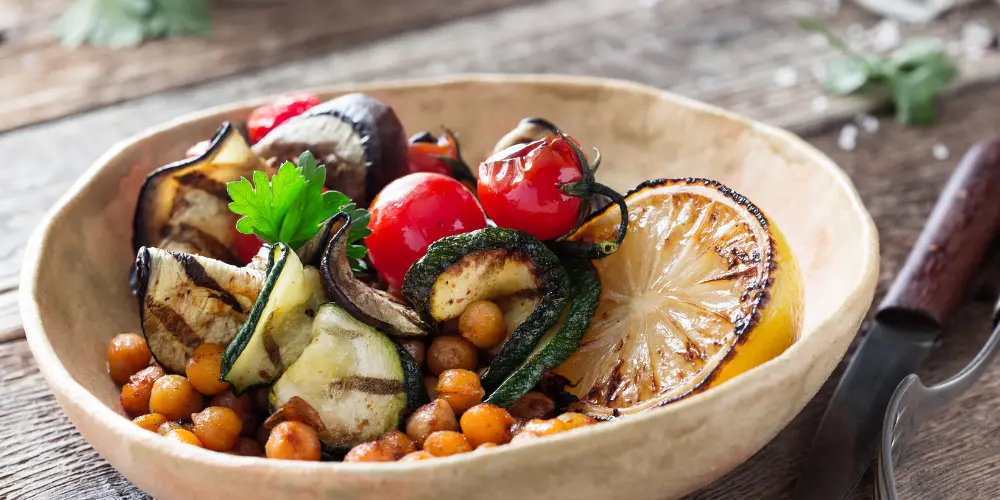Happy with a couple of low-maintenance vegan options on your restaurant’s menu? Think again. Unless of course, you are purposely trying to stay out of one of the most prominent food trends globally. Not tapping into the plant-based market may be a huge miss for any food establishment, even those that don’t necessarily specialise in plant-based diet.
Indeed, it’s estimated that the global market of plant-based foods will witness a fivefold growth by 2030, and that’s not only thanks to the newly converted vegan eaters. More and more customers generally opt for vegan and vegetarian dishes, meat alternatives and dairy-free options, as part of the healthier dietary trends.
So why stick to the cliche salad- toast-pasta menu items as a one-size-fits all solution for your plant-based enthusiasts? It’s time to spice things up (literally and metaphorically) and impress your vegan, as well as non-vegan, visitors with enhanced flavours, extraordinary presentation and unique dishes that will keep them coming back for more.
Experiment away

Just because you’re using fruits and veggies as part of your menu, it doesn’t mean you’ve already got what it takes. To bring together an outstanding vegan menu that doesn’t feel cliche, it’s best to adopt a beginner’s mindset and explore the variety of other fresh produce to ignite creativity.
Experiment with different vegetables, grains, legumes, nuts, and seeds and explore the wide variety of plant-based proteins available today. And don’t forget about spices! By thinking outside-the-box and being open to new, bold combinations, you are sure to amuse your guests with a plant-based meal they will not forget.
Tip: Like any specialty cuisine, education and practice are essential. Sign up for culinary workshops or consult with local and international plant-based chefs to explore unconventional ingredients, try out new techniques, and exchange experiences.
Add complexity
A well-balanced vegan dish should have a mix of textures and flavours to really entice your restaurant guests. Think about the interplay between sweet, salty, sour, bitter, and umami and opt for ingredients that offer a variety of textures and tease the taste buds of your diners further. With that being said, the nutritional value matters as well. Consider if the dish can be enhanced not only to please the senses, but also fuel the body.
Tip: Incorporate different cooking methods such as roasting, grilling, fermenting, and steaming to bring out different textures and flavours in your ingredients.
Celebrate seasonality

Plant-based diet calls for you to fully embrace seasonality. Instead of using vegetables as mere sides or fillers, make them the centrepiece of your dishes. Move away from all-year-round options, and add some seasonal fruits and veggies into your menu to create a more atmospheric experience for your guests. Think beyond the usual suspects like mushrooms and tofu – explore the potential of vegetables like cauliflower, eggplant, beets, and fennel.
Tip: Consult your suppliers about the seasonal vegetables available in your area, and create a rotating menu offerings that will highlight the fresh produce.
Looks matter
When it comes down to food – looks matter. After all, people eat with their eyes first and a dish presented in an original and appetising way can go a long way to enhance the dining experience of your restaurant’s customers. Play around with colours, contrasts, food plating, and make your vegan dishes be just as appetising to eyes, as to the taste buds.
Tip: Check out local or online food styling courses or take some inspiration from social media to find options that work best with your food items.
Don’t skip on dessert

One of the best ways to surprise your vegan guests, as well as stand out from your competition, is by adding an irresistible plant-based dessert option on your menu. Think about it – vegan dessert menus are typically limited to fruit salads and sorbets. But how much more delicious does a pot of avocado chocolate mousse or a slice of cashew-based cheesecake sound to accompany the meal?
Tip: You don’t need to start from scratch. Look for native plant-based desserts, as well as explore the options for substitutes to convert your existing best sellers into vegan-friendly options too.
Get some feedback
Don’t shy away from asking your plant-based enthusiasts for some honest feedback. Find out which dishes stood out to your restaurant guests the most, and where they feel there’s still some room for improvement. It will not only help you to refine the menu, but also more likely lead to some suggestions for the dishes to add to your menu in the future.
Tip: Use automated feedback forms to gather their reviews of your plant-based offerings and include special discounts and vouchers for their next visit to boost the response rate, as well as encourage customer loyalty.
Time to drop the cliches
Even though vegan cuisine is hardly new, it’s definitely an ever-evolving and dynamic field. So why stick to just the easiest dishes for the sake of getting it over and done with? Instead, commit to looking for new ways to amaze your plant-based guests.and keep on exploring the dynamic plant-based culinary world. At the end of the day, something that may entice your restaurant guests today, is not guaranteed to work just as well down the line. New recipes, trends, and innovations constantly pop-up, so stay in the loop to keep one step ahead of the competition.

Unlock the tips that will help you stand out from the crowd and get more bookings!

Learn how to save time, reduce stress and fill your restaurant while you sleep!

Stephanie Bugeja
Tableo’s design-savvy Marketing Executive, Stephanie blends UX expertise with creative flair. Lover of clean layouts and cornetti in Rome.

Stephanie Bugeja
Tableo’s design-savvy Marketing Executive, Stephanie blends UX expertise with creative flair. Lover of clean layouts and cornetti in Rome.









